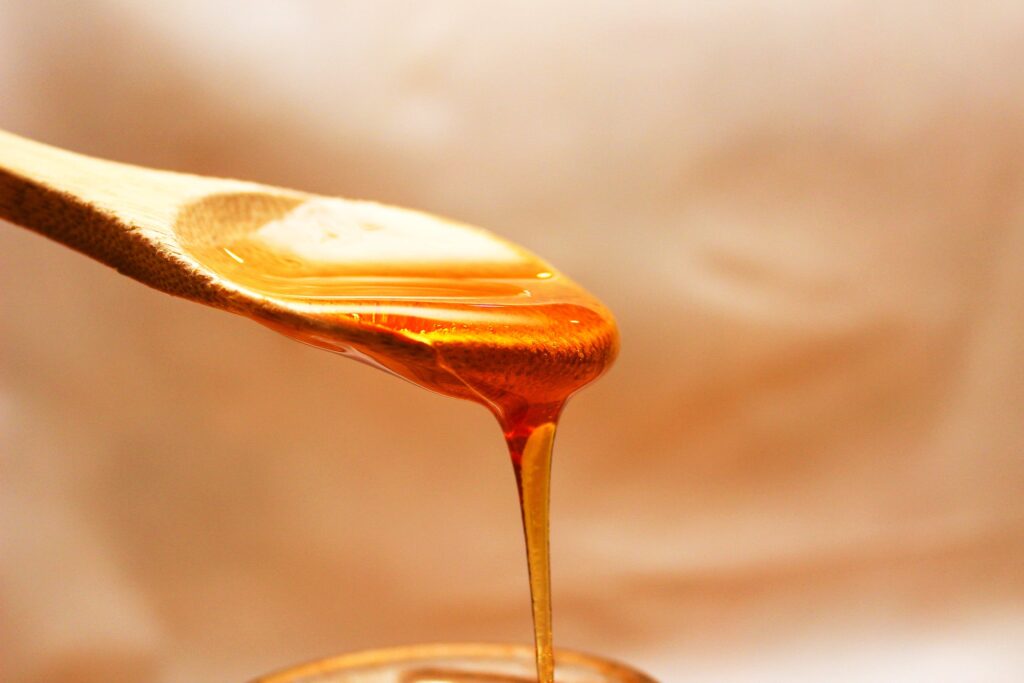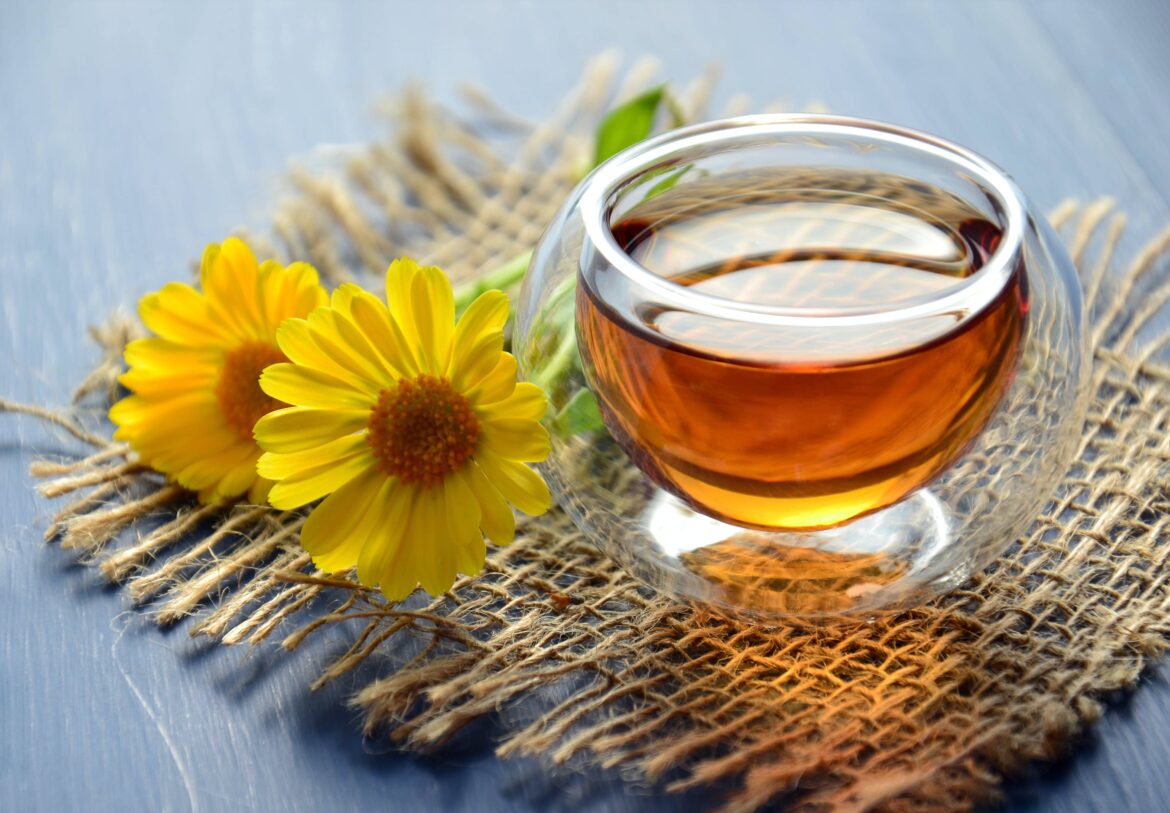1. Honey and wounds
Honey is the oldest wound healing agent known to man, which can effectively promote wound debridement autolysis, stimulate tissue growth, accelerate healing, reduce pain, inhibit edema and exudate production. Honey induces white blood cells to release cytokines, which is the beginning of a cascade of tissue repair. In addition, it can activate the immune response to microbial infection, promote the proliferation of B and T lymphocytes and enhance the activity of phagocytes. Studies by JULL et al. have shown that the healing time of burns treated with honey is four to five days shorter than with traditional dressing drugs. Similarly, infected wounds after surgery heal faster with honey than with disinfectant, with fewer side effects.
Meng Jianmin et al. conducted research and analysis on 100 clinical patients with compression trauma, and compared with traditional ointment, the use of honey can significantly shorten the wound healing time. In addition, the mixture of chestnut honey and royal jelly can promote corneal healing in rats. Therefore, honey is an economic, safe and effective natural wound healing agent, but clinicians should understand the composition and biological characteristics of the selected honey before medication, and better play the role of honey by comparing and analyzing different kinds of honey.
2. Honey and Asthma
Studies have shown that honey can effectively relieve asthma and related complications by reducing asthma-related histopathological changes in the airway, and intake of honey can also effectively inhibit the proliferation of mucus-secreting goblet cells. SHAMSHUDDIN et al. have shown that 40%-80% concentration of Australian Gram honey can significantly reduce the level of inflammatory cell invasion and β-hexosidase in bronchoalveolar lavage fluid, and Gram honey can alleviate histopathological changes in mice with allergic asthma.
ABDELRAHMAN et al. showed that the combination of honey with black seed oil and celery seed can better control asthma and related complications. In summary, honey, whether used alone or in combination with other substances, can alleviate asthma and related complications to a certain extent. Therefore, further studies are needed to clarify the molecular mechanism of honey alleviating asthma symptoms, and the alleviating effect of honey on asthma also needs to be further supported by clinical trials, providing new ideas for the development of honey products and the treatment of asthma.
3. Honey and cardiovascular disease
Cardiovascular disease is a serious challenge facing modern medicine. Oxidative stress, increased clotting, and overactivation of platelets may increase the incidence of cardiovascular disease. Phenolic components in honey have a certain auxiliary effect on the prevention and remission of cardiovascular diseases. ELENA and other studies have shown that the phenolic components in wild cherry berry honey can effectively relieve the symptoms of atherosclerosis and heart disease in model rats. RASAD et al. studied the effects of sucrose and honey on blood lipids in young healthy subjects, and the results showed that honey consumption could improve blood lipids, reduce total cholesterol, triglycerides and low-density lipoprotein in human body, and increase high-density lipoprotein.

MARTINA et al. studied the anti-platelet effects of aspirin and honey based on the bleeding time of mice, and the results showed that the average bleeding time of the tail of mice treated with honey (304.63 s) was close to that of the positive control group (369.38 s). Therefore, honey has anti-platelet effects on mice. Honey can be considered as a complementary medicine for the treatment of heart and vascular diseases, but its mechanism of action needs further scientific research and clinical trials. To sum up, honey has a certain preventive and protective effect on cardiovascular diseases, which can reduce the incidence of coronary heart disease by improving coronary vasodilation, reducing the ability of platelet coagulation in the blood, and inhibiting the oxidation of low density lipoprotein. However, the potential mechanism of honey for other types of cardiovascular diseases needs further research.
4. Honey and neurological diseases
Neurological diseases mainly include anxiety, cognitive dysfunction, Alzheimer’s disease, epilepsy and spinal cord injury. Studies have shown that the caffeine and acetylphenylethylamine in honey can boost the body’s secretion of dopamine, a key neurotransmitter in the hypothalamus and pituitary gland, which can directly affect a person’s mood. The phenolic components in honey can also enhance cellular antioxidant defenses by reducing the level of ROS in the body, and achieve the effect of relieving neuroinflammation. OTHMAN et al. showed that supplementation of 20 mg of dolan honey daily for 16 weeks in postmenopausal women significantly improved immediate memory and reduced oxidative stress levels in women, and was comparable to receiving estrogen and progesterone therapy.
AL-RAHBI et al. showed that when ovarioless rats were given 200 mg/kg dolang honey for 18 consecutive days, the rats’ long-term memory and short-term memory were significantly improved. In addition, Dolang honey could prevent neurodegeneration, improve memory and regulate mood. To sum up, honey is a natural neuroprotective agent, which contains a variety of phenolic substances that can alleviate neurological diseases, such as caffeine, acetyl phenylethylamine and coine, etc. These substances have shown good effects in improving memory, regulating emotions and protecting the nervous system. Therefore, honey has a large potential in the prevention and treatment of neurological diseases
5. Honey and gastrointestinal diseases
The disturbance of intestinal microorganism is one of the important factors leading to gastrointestinal diseases. Honey has been used to moisten the bowels since ancient times. Honey is rich in oligosaccharides, such as raffinose, hydrothreose, cane triose, etc., which can play a prebiotic role. In addition, JIANG et al. showed that polyphenols and oligosaccharides in buckwheat honey can play a synergistic role in inhibiting harmful bacteria and promoting the growth of beneficial bacteria, thus playing a role in regulating intestinal flora. Therefore, it is of great significance to select honey rich in polyphenols and oligosaccharides to improve intestinal flora. Helicobacter pylori is a common pathogenic bacterium in the gastrointestinal tract and gastric mucosa, which can lead to gastric cancer.
ALLEN et al. have shown that New Zealand Manuka honey has an inhibitory effect on helicobacter pylori, which is mainly attributed to its unique component methylglyoxal. RANNEH et al. found that after giving a mixture of 2 g/kg insulin and chestnut honey daily to a rat model, the inflammation of gastric ulcer in rats was significantly reduced, and the risk of gastric ulcer lesions in rats was significantly reduced by taking it for 7 consecutive days. In summary, honey may be a natural intestinal health product, which can protect intestinal function by inhibiting a variety of intestinal pathogenic bacteria. Drinking honey can not only play a role in protecting the gastrointestinal mucosa, but also reduce the stimulation of food on the gastric mucosa, but it is recommended to drink honey in appropriate amount to avoid increasing the gastrointestinal burden.


